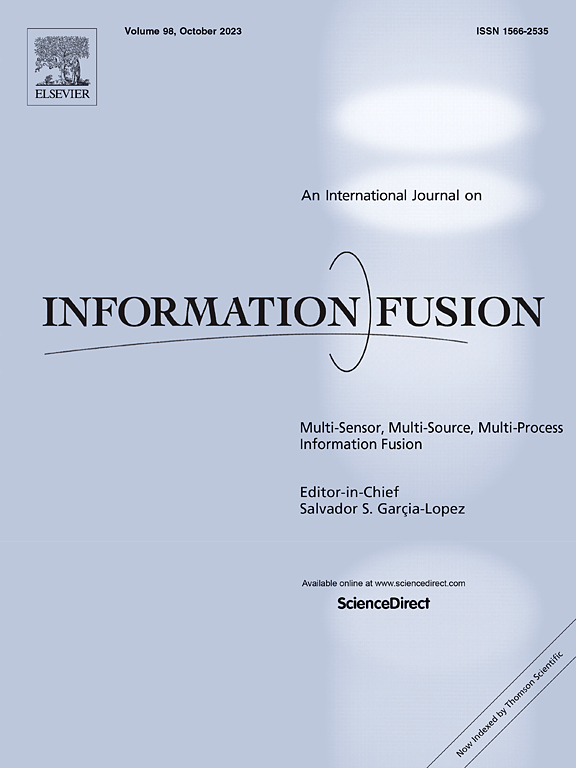A survey for wearable sensors empowering smart healthcare in the era of large language models
IF 15.5
1区 计算机科学
Q1 COMPUTER SCIENCE, ARTIFICIAL INTELLIGENCE
引用次数: 0
Abstract
Large language models (LLMs) have made significant advances in biomedical applications, including medical literature analysis and clinical note summarization. Meanwhile, intelligent wearable sensors have become essential tools for joint motion analysis and disease diagnosis with their high sensitivity, real-time monitoring capabilities, and diverse application scenarios. However, effectively integrating LLMs with wearable sensors to achieve in-depth motion data analysis and intelligent health management remains a major research challenge. Traditional studies have often treated joint motion analysis and disease diagnosis as separate domains. This review provides a comprehensive analysis of wearable sensor classifications, data fusion algorithms, and their representative applications in human posture recognition and disease diagnosis, while further exploring the potential of LLMs in enhancing wearable sensor capabilities. The incorporation of LLMs offers the potential to uncover complex relationships between movement patterns and disease progression, facilitating more accurate health assessments and early interventions. In addressing the challenges associated with multi-source sensor data fusion and real-time processing, LLMs, with their powerful feature extraction and cross-modal learning capabilities, are expected to improve data processing efficiency and enable more intelligent real-time diagnostics and decision support. Additionally, energy consumption and computational load remain critical bottlenecks limiting the long-term deployment of wearable devices. Integrating self-powered sensors presents a promising avenue for enhancing data processing efficiency. This review summarizes key challenges in current technological developments and envisions the future convergence of LLMs and wearable sensors, aiming to drive the advancement of intelligent healthcare and health monitoring.
可穿戴式传感器在大语言模型时代赋予智能医疗的调查
大型语言模型(LLMs)在生物医学应用方面取得了重大进展,包括医学文献分析和临床记录摘要。同时,智能可穿戴传感器以其高灵敏度、实时监测能力和多样化的应用场景,成为关节运动分析和疾病诊断的必备工具。然而,如何将llm与可穿戴传感器有效集成,以实现深入的运动数据分析和智能健康管理仍然是一个主要的研究挑战。传统的研究往往将关节运动分析和疾病诊断视为两个独立的领域。本文全面分析了可穿戴传感器的分类、数据融合算法及其在人体姿势识别和疾病诊断中的代表性应用,同时进一步探讨了llm在增强可穿戴传感器功能方面的潜力。llm的结合提供了揭示运动模式和疾病进展之间复杂关系的潜力,促进了更准确的健康评估和早期干预。在解决与多源传感器数据融合和实时处理相关的挑战时,llm凭借其强大的特征提取和跨模式学习能力,有望提高数据处理效率,实现更智能的实时诊断和决策支持。此外,能源消耗和计算负荷仍然是限制可穿戴设备长期部署的关键瓶颈。集成自供电传感器为提高数据处理效率提供了一条有前途的途径。本文总结了当前技术发展中的关键挑战,并展望了llm和可穿戴传感器的未来融合,旨在推动智能医疗保健和健康监测的发展。
本文章由计算机程序翻译,如有差异,请以英文原文为准。
求助全文
约1分钟内获得全文
求助全文
来源期刊

Information Fusion
工程技术-计算机:理论方法
CiteScore
33.20
自引率
4.30%
发文量
161
审稿时长
7.9 months
期刊介绍:
Information Fusion serves as a central platform for showcasing advancements in multi-sensor, multi-source, multi-process information fusion, fostering collaboration among diverse disciplines driving its progress. It is the leading outlet for sharing research and development in this field, focusing on architectures, algorithms, and applications. Papers dealing with fundamental theoretical analyses as well as those demonstrating their application to real-world problems will be welcome.
 求助内容:
求助内容: 应助结果提醒方式:
应助结果提醒方式:


